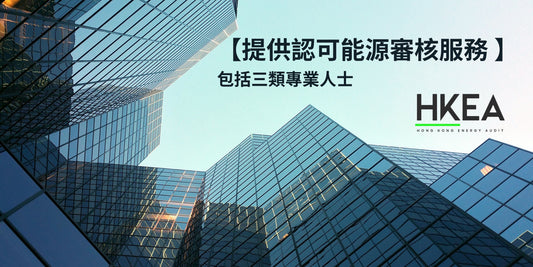
[What is the difference between BEAM Plus, WELL, and LEED green certification? How does it help brand companies? 】
Share
As we are about to enter 2025, environmental protection has become a hot topic. Green certifications including BEAM Plus, WELL, and LEED not only prove that companies, property owners or tenants attach great importance to environmental protection, but also bring positive help to corporate brands. , HKEA will explain in detail the differences between the three and the importance of green certification to the brand in this article. Of course, our professional team will also help you obtain green environmental certification through our qualifications and experience.

Green building certification
Property types covered by green certification include New Buildings (NB), Existing Buildings (EB) and Interiors (BI). Taking the most common certifications in Hong Kong as an example, including LEED, WELL and BEAM Plus, an "expert" (AP, or BEAM Pro) is usually in charge of the project, coordinating the team, collecting data and submitting it for review until the project is successfully certified. Certification.
New Buildings
New building assessments generally cover the planning, design, construction and commissioning stages of new construction projects, and are also applicable to large-scale renovation or modification works of existing buildings.
Existing Buildings
There are more than 42,000 existing buildings in Hong Kong, most of which are over 30 years old. The owners of these buildings (especially private buildings) adopt green building management, which plays a vital role in sustainable development. Existing Building Assessment Tool It aims to attract more people to participate in "greening" existing buildings, encourage conservation and more efficient energy management, and promote and guide behavioral changes.
Interiors
The applications for NB and EB are for a building, while BI mainly refers to a place. It is usually applied by an indoor space operator (either a tenant or an owner) to add or maintain a green certified indoor space for his or her business ( (but shops, offices, or other indoor spaces). Certification is generally followed up by "experts" with professional qualifications, starting from decoration design, demolition, construction to completion, ensuring that relevant certifications can be obtained and the target level can be achieved after completion.

Hong Kong Green Building Council HKGBC
BEAM Plus
As one of the assessment tools of the Hong Kong Green Building Council, BEAM Plus is responsible for assessing the sustainability of buildings. Assessment projects include:
*Energy use and carbon emissions
* Climate adaptation and resilience
* Land use and transportation
* Ecological protection
* Materials and waste
* use water
* Health and comfort
* Pollution management
* Integrated design
* Smart technology and innovation, etc.
By providing a fair and objective assessment of the overall performance of a building, organizations and businesses of all sizes can use BEAM to demonstrate their determination to promote sustainable development. The ratings will be divided into four levels, namely Bronze, For silver, gold and platinum, we provide BEAM Plus EB and BI green certification consulting services, which are handled by consultants with BEAM Pro qualifications in the team.
BEAM Pro are green building professionals recognized by the Hong Kong Green Building Council. Their expertise covers different areas throughout the green building life cycle and integrates the latest green building standards and codes into daily building planning and design. , construction and operation is one of the important responsibilities of green building professionals, and their professional opinions are of great help to applicants.
WELL Building Standard™
WELL Certificate
WELL Certification is a global green building rating system that recognizes buildings designed and constructed to support the health and well-being of their occupants. WELL certification was developed by the International WELL Building Institute (IWBI) and evaluates the performance of buildings in terms of sustainability, health and well-being. The evaluation principle is "people-centered".
WELL Certificate Rating Projects and Standards
The 10 thematic concepts are: air, water, nutrition, light, movement, thermal comfort, acoustic environment, materials, spirit and community.
* Equity: Providing the greatest benefit to the greatest number of people, including all demographic and economic groups, with special consideration for disadvantaged groups.
* Global: The proposed intervention is feasible, achievable and relevant at multiple application levels around the world.
* Evidence-based: Backed by strong, proven research. The conclusions drawn from these research results are basically in line with the recognition of the scientific community.
* Highly technical: draw on industry best practices and proven strategies, and be consistent with survey results in related fields or disciplines.
* User-first: Define the content of the standard through a dynamic process that provides multiple opportunities for stakeholder participation and incorporates the expertise and opinions of today's leaders in science, medicine, business, design, and operations.
* Adaptable: able to respond to advances in scientific knowledge and technology, constantly adjusting and synthesizing new discoveries in the field.
WELL v2 certification levels are divided into four levels, namely bronze, silver, gold and platinum. We provide WELL Certificate green certification consulting services, which are handled by consultants with WELL AP qualifications in the team.
WELL AP (WELL Accredited Professionals) are people who are familiar with WELL-related requirements for green building applications, and can implement integration processes and lead project teams to create healthy buildings. Its professional advice is of great help to applicants applying for WELL Certificate.
LEED (Leadership in Energy and Environmental
Design)
LEED ID+C (interior design + construction) (interior decoration improvement certification)
LEED EBOM (Existing Buildings: Operations & Maintenance) (certification for existing buildings or partial modifications of buildings)
LEED certification is a tool for evaluating green buildings. The main evaluation principle is "the impact of the building on the environment." LEED was established by the U.S. Green Building Council and implemented in 2003. It has been listed as a statutory mandatory standard in some U.S. states and some countries. The purpose of LEED is to effectively reduce the negative impact of buildings on the environment and residents during design.
LEED assessment projects and standards
* Building location and transportation
- Scoring items: The building is located within the scope of LEED ND, the surrounding population density and the multiple uses of the surrounding buildings, the accessibility of public transportation, etc.
* Sustainable base development
- Necessary items: Pollution prevention and control during construction activities
- Scoring items: open space, reducing light pollution, reducing heat island effect, etc.
* Water efficiency
- Necessary items: indoor and outdoor water reduction, water meter monitoring
- Scoring items: indoor and outdoor water reduction, water meter monitoring, cooling water tower water consumption, etc.
*Energy and atmosphere
- Necessary items: basic air conditioning control, minimum energy usage requirements, etc.
- Scoring items: renewable energy, energy efficiency optimization, advanced energy usage monitoring system, etc.
*Materials and ResourcesMaterials and Resources
- Necessary items: storage and collection of recycled resources, construction waste treatment plan
- Scoring items: construction waste management, utilization of old buildings, use of green building materials, etc.
* Indoor environmental quality
- Necessary items: basic indoor air quality, environmental smoke prevention and control
- Scoring items: low-emission materials, natural lighting, air quality monitoring, etc.
* Innovation and design process
- Scoring items: innovative design techniques, LEED certified professionals
* Regional Priority Credits
- Scoring item: Regional characteristics set by USGBC
The LEED rating system is divided into four levels, namely LEED Certified, LEED Silver, LEED Gold and LEED Platinum. We provide LEED ID+C and LEED EBOM green certification consulting services, which are handled by consultants with LEED AP qualifications in the team.
LEED AP (LEED Accredited Professional) is a certification issued by the U.S. Green Building Council (USGBC). It aims to recognize individuals with professional knowledge in the field of sustainable building design and green building. The LEED AP certification requires the certificate holder to complete the certification within a certain period. Complete continuing education to keep their certification current and expertise updated.
LEED AP has the following recognitions
expertise
LEED AP certification demonstrates the holder's in-depth understanding and application of the LEED (Leadership in Energy and Environmental Design) rating system.
green building
Professionals who hold LEED AP certification have professional skills in the design, implementation and operation of green building projects and can help projects obtain LEED certification.
Various fields
LEED AP has multiple specialized areas, including new construction, existing buildings, community design, etc. Professionals can choose certification areas based on their interests and professional directions.

Our professional team at HKEA has in-depth understanding and understanding of obtaining green building certification. The responsible team is only led by one accredited person from the green building assessment agency to take charge and follow up. If you are planning to obtain BEAM Plus for your building or business location , WELL or LEED certification, you are welcome to inquire with our HKEA customer service at any time.




